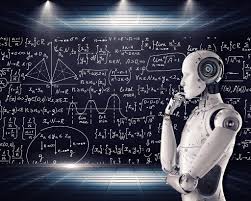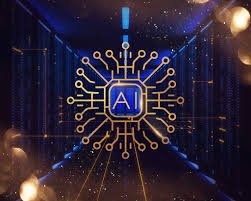The post How should you start to learn machine learning using Java? appeared first on Magnimind Academy.
]]>1- Machine learning in Java
![]()
There’s a misconception that without learning Python or R, you can’t succeed in machine learning. However, the truth is that if you’ve got a Java development background, you can do without learning these popular programming languages. You should remember that Java gives support for development in any field you want, and data science is no different. By using third-party open source libraries, you can leverage your expertise as a Java developer to implement a data science algorithm and get things done. Though there’s no denying that Python or R come with their own set of advantages, you won’t need to learn them specifically to execute machine learning- or data science-related algorithms.
2- Leading machine learning libraries for Java
![]()
If you’re looking for some of the best machine learning libraries for Java, you’ll find Weka to be the most popular choice. Weka is suitable for data mining tasks, where algorithms can either be called from your own Java code or applied directly to a dataset. Weka contains tools for functions like clustering, classification, regression, association rules, and visualization.
Apache Mahout is another machine learning library for Java, which is designed to be enterprise-ready. This scalable and flexible ML framework comes with in-built algorithms to help you create your own algorithm implementations. Mahout’s distributed linear algebra framework allows statisticians, mathematicians, analytics professionals, and data scientists to implement their own algorithms.
ADAMS (Advanced Data mining And Machine learning System) is a flexible workflow engine that uses a tree-like structure to manage how data flows in the workflow. This means there exist no explicit connections that are essential. Using ADAMS, you can quickly build and maintain real-world workflows that are generally complex in nature.
Some other machine learning libraries for Java are ELKI (Environment for Developing KDD-Applications Supported by Index Structures), Deeplearning4j, JavaML, MALLET (MAchine Learning for LanguagE Toolkit), JSAT (Java Statistical Analysis Tool), and RapidMiner, to name a few.
If you’re a Java programmer or are adept in Java, the fastest route to a career in machine learning is enrolling in a machine learning bootcamp. Taught by industry experts and having ample hands-on training, such a bootcamp will help you fast-track your machine learning career dreams.
. . .
To learn more about machine learning, click here and read our another article.
The post How should you start to learn machine learning using Java? appeared first on Magnimind Academy.
]]>The post What are the main differences between artificial intelligence and machine learning? appeared first on Magnimind Academy.
]]>![]()
- Artificial intelligence is the intelligence demonstrated by machines. Any machine that understands its environment and is able to take actions that increase its chances of achieving some goals, can be described as an artificial intelligence-enabled machine. On the other hand, machine learning is one of the present applications of artificial intelligence.
- When machine learning goes beyond simple programming and can mirror and interact with people, even on the fundamental level, artificial intelligence comes into the picture. Though artificial intelligence needs machine learning to optimize decision, the former is the step beyond the latter. Artificial intelligence utilizes what it has obtained from machine learning to simulate intelligence.
- In artificial intelligence, a machine learns by gathering knowledge and understanding how to apply it. Here, the goal is to increase the chances of finding an optimal solution. It’s the study of training computers to try to do things which a human can do better at present. On the contrary, in machine learning, algorithms obtain the skill or knowledge via experience. It depends on big datasets to keep on reminding the data to identify common patterns.
- Based on capabilities, artificial intelligence can be distributed into two categories namely general AI and narrow AI. Based on learning methods, Machine learning can be distributed into three categories namely supervised learning, unsupervised learning, and reinforcement learning.
- The objective of artificial intelligence to develop smart systems like humans that can solve complex problems. The goal of machine learning is to let a machine learn from massive datasets so that they can provide accurate output.
- The key applications of artificial intelligence include customer support using chatbots, Siri, intelligent humanoid robot etc. The key applications of machine learning include Google search algorithms, online recommender system, Facebook friend tagging suggestions etc.
- Artificial intelligence holds a broad range of scope while machine learning comes with a limited scope.
- Artificial intelligence deals with structured, unstructured, and semi-structured data while machine learning works with only structured, and semi-structured data.
![]()
Both machine learning and artificial intelligence can leave valuable business implications. In the context of the coming future, both are imperative to our society. A robust understanding of both of these fields will be extremely important to comprehend the rapidly changing business world and how the devices we use everyday work. The promises and value of both these fields are being materialized because of each other. If you’re an aspiring candidate looking to step into these fields, this is probably the best time to begin your journey. As advancements and adoptions of both artificial intelligence and machine learning continue to accelerate, one thing can be assumed for sure – the impact will be profound.
. . .
To learn more about machine learning, click here and read our another article.
The post What are the main differences between artificial intelligence and machine learning? appeared first on Magnimind Academy.
]]>The post AI and Machine Learning facilitate people’s lives in terms of many aspects appeared first on Magnimind Academy.
]]>But before delving deeper, let’s have a quick look at what are AI and machine learning basically.
1- AI and machine learning – What they are

Fundamentally, AI or artificial intelligence refers to the intelligence demonstrated by the machines. And ML or machine learning is a way using which professionals achieve AI. Machine learning can be considered as the ability of machines to learn utilizing statistical techniques without being programmed explicitly.
2- Ways AI and machine learning are facilitating average people’s lives

The concepts of AI and machine learning aren’t completely foreign to us as they have been heavily explored by popular media. There are lots of movies which have shown us a world where AI-enabled robots and machines hold the dominating power. And these have triggered, to a good extent, lots of negative impressions about AI and machine learning among the average people. However, despite how negatively movies demonstrate the power of AI and machine learning, these technologies are truly transforming average human lives into better ones. Let’s explore the most common aspects that are being impacted by AI and machine learning.
2.1- Banking and financial services
![]()
It’s hardly possible to count the number of people that have bank accounts. In addition, just consider the number of their associated facilities like credit cards which are in circulation. Now imagine how many hours human employees of these institutions would have to invest to sift through the transactions that are performed every day? And how much time and effort it would take to identify an anomaly? With the help of AI and machine learning, a huge number of banks and financial institutions have become able to review the quality of various applications and to analyze and predict risks, in an effort to make informed decisions. The so-called traditional industry is implementing AI and machine learning to increase user engagement. High-end technologies like predictive analysis, chatbots, voice recognition etc are helping minimize the gap between potential customers and financial institutions. These days, it’s possible for any customer to contact any of these establishments anytime and from anywhere and receive real-time replies.
2.2- Healthcare services
![]()
Both AI and machine learning have already acquired a significant part in our well-being and health. From being utilized for faster patient diagnosis to the prevention of illnesses – these technologies are being used on a regular basis by lots of healthcare service providers. These days, it’s possible to predict the potential health hazards a person may be susceptible to, depending on his/her genetic history, socio-economic status, age etc – which was simply unimaginable before the emergence of AI and machine learning. With the help of AI and machine learning-powered programs, healthcare service providers can cross-reference symptoms against databases that contain millions of cases of illnesses to expedite the process of diagnosing disease and illness, saving lives through faster and appropriate treatment. These technologies are also being adapted to expedite research works toward cures of different diseases.
2.3- Email
![]()
Almost every person uses email these days for a huge number of purposes. It may sound unlikely but your email inbox is a place where advanced technologies take place on a regular basis. There are two key aspects where email service providers use AI and machine learning. First comes the advanced spam filter. Unlike plain rule-based filters that aren’t much effective against spam as spammers can update their messages quickly to work around them, advanced spam filters continually learn from a wide range of signals like message metadata, words in the message etc to prevent spam. Another aspect is smart email categorization. You’ve probably seen that Gmail uses an approach to categorize the emails into primary, promotion, social inboxes. This is made possible with the help of AI and machine learning together with manual intervention from users. When some messages are marked in a constant direction by a user, a real-time increment to that threshold is performed by Google in order to achieve appropriate categorization.
2.4- Transportation industry
![]()
There’s a heavy influence of AI and machine learning on the present transportation industry can be found. These technologies have been instrumental in lowering threats triggered by reckless driving via the deployment of automation and sensory management. There are vehicles that can understand their surrounding parameters and thus, can take precautionary measures whenever needed to ensure passenger safety. Apart from vehicles, AI and machine learning technologies are to be deployed soon to prevent traffic congestion on roads and for traffic management.
2.5- Taking over tedious and hazardous jobs
![]()
AI and machine learning can seem to be a boon to humanity when we consider the fact that they liberate humans and enable them to focus on tasks in which they excel. These technologies take care of a wide range of tedious tasks that have to be performed in order to attain different results. Machines excel in performing cumbersome tasks, leaving enough time and room for humans to focus on more creative aspects of a business. In the financial sector, for example, AI and machine learning help financial analysts to get some relief from the monotonous nature of their jobs and concentrate on deeper analysis and research of all-round customer experience. In the context of hazardous jobs like bomb disposal, welding etc, AI and machine learning are helping the professionals to a great extent. These days, machines are taking over those jobs with the help of human intervention.
2.6- Social networking
![]()
Almost everyone has experienced it several times. When a user uploads pictures to Facebook, the faces get highlighted automatically and the service suggests friends to tag. If you wonder how it can find out which of your friends are in the picture, Facebook uses AI and machine learning techniques to recognize faces. It also uses these technologies to personalize their users’ newsfeed and ensure that they are viewing posts that interest them. Apart from Facebook, almost all other social networking platforms including Pinterest, Instagram, Snapchat etc leverage AI and machine learning to maximize user experience.
2.7- Online shopping
![]()
Online shopping has become almost an inevitable part of life for today’s tech-savvy customers. Have you ever wondered how e-commerce websites quickly return with a collection of the most relevant items related to your search? AI and machine learning are technologies that make it possible. Personalized recommendations on their home page, product pages etc are also examples of their deployment. Fraud protection is another aspect where these technologies perform a great job. Here, AI and machine learning are deployed to not only avert fraudulent transactions but to lower the number of legitimate transactions that are declined because of being falsely marked as fraudulent.
2.8- Home security and home automation
![]()
When it comes to home security, these days, a significant number of homeowners are deploying cutting-edge systems are deploying high-end cameras and security systems powered by AI and machine learning. These systems are capable of building a catalog of the frequent visitors of a home and thus, can detect uninvited guests instantly. Smart homes also offer a multitude of different types of useful features such as providing notification when the kids come back from school etc. When combined with appliances, AI and machine learning can make household management and housework seamless. From allowing the refrigerator to communicate with the oven to replenishment of food and supplies – all have become possible.
Final Thoughts

From the above examples, it can be concluded that a significant number of things, which were simply unimaginable before the emergence of AI and machine learning, have become possible these days. However, similar to other technologies, AI and machine learning also come with a significant number of negative concerns. The biggest one of them is that these technologies will replace humans in performing several tasks, making people jobless eventually. However, if these technologies are looked upon as tools rather than replacements, businesses should be able to attain a huge industrial growth. According to many experts, AI and machine learning have an opportunity to work together with humans. By nature, humans are good at raising the right questions while AI and machine learning are good at dealing with huge amounts of information. By working together they can leave a huge business impact. The future of these technologies isn’t exactly clear today, but they’ll surely have an impact on society as they are doing right now. We’ll have to wait to see whether that impact turns out to be positive or negative but it can be said that these technologies have a huge potential to make the lives of the people easier to a great extent.
. . .
To learn more about artificial intelligence, click here and read our another article.
The post AI and Machine Learning facilitate people’s lives in terms of many aspects appeared first on Magnimind Academy.
]]>